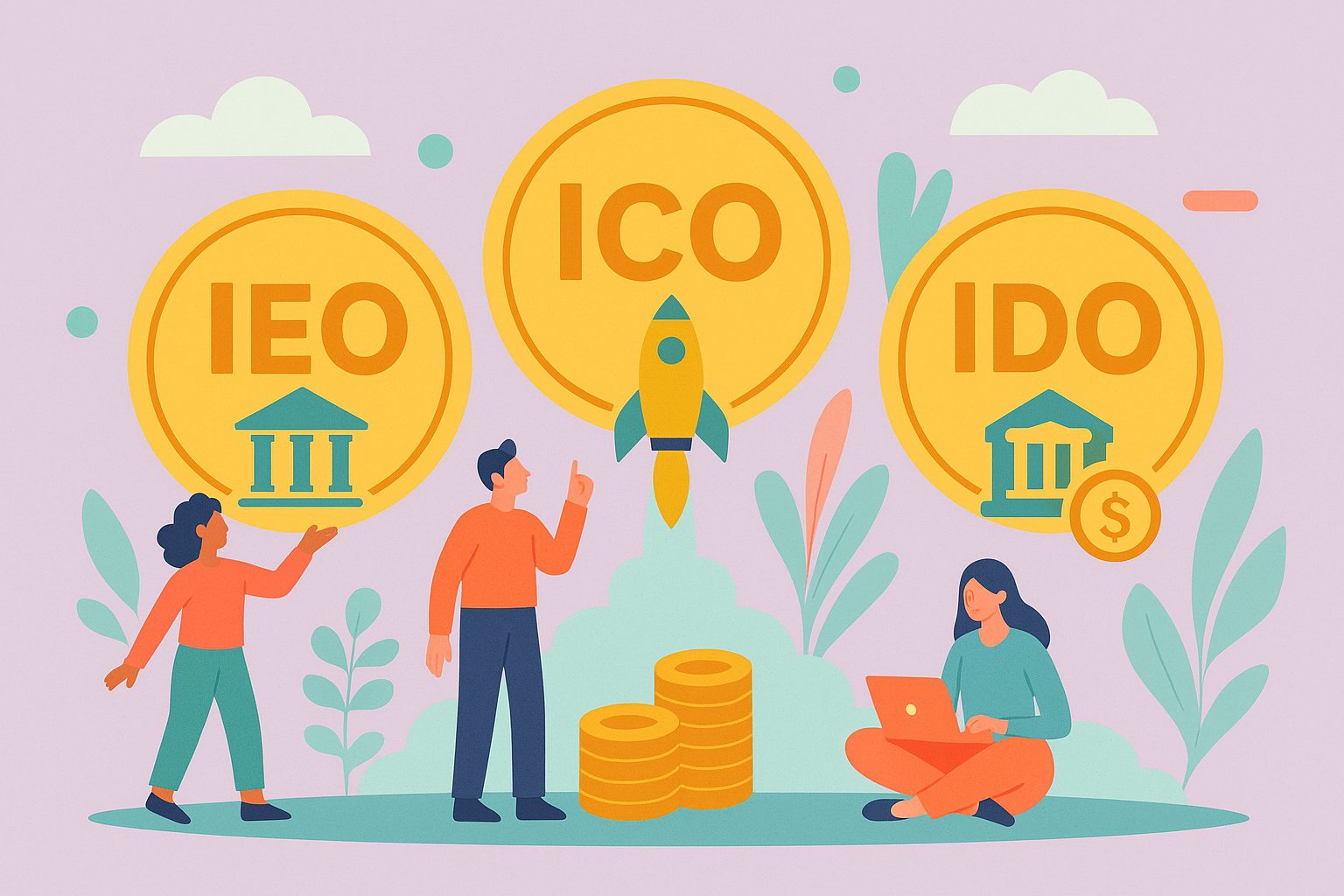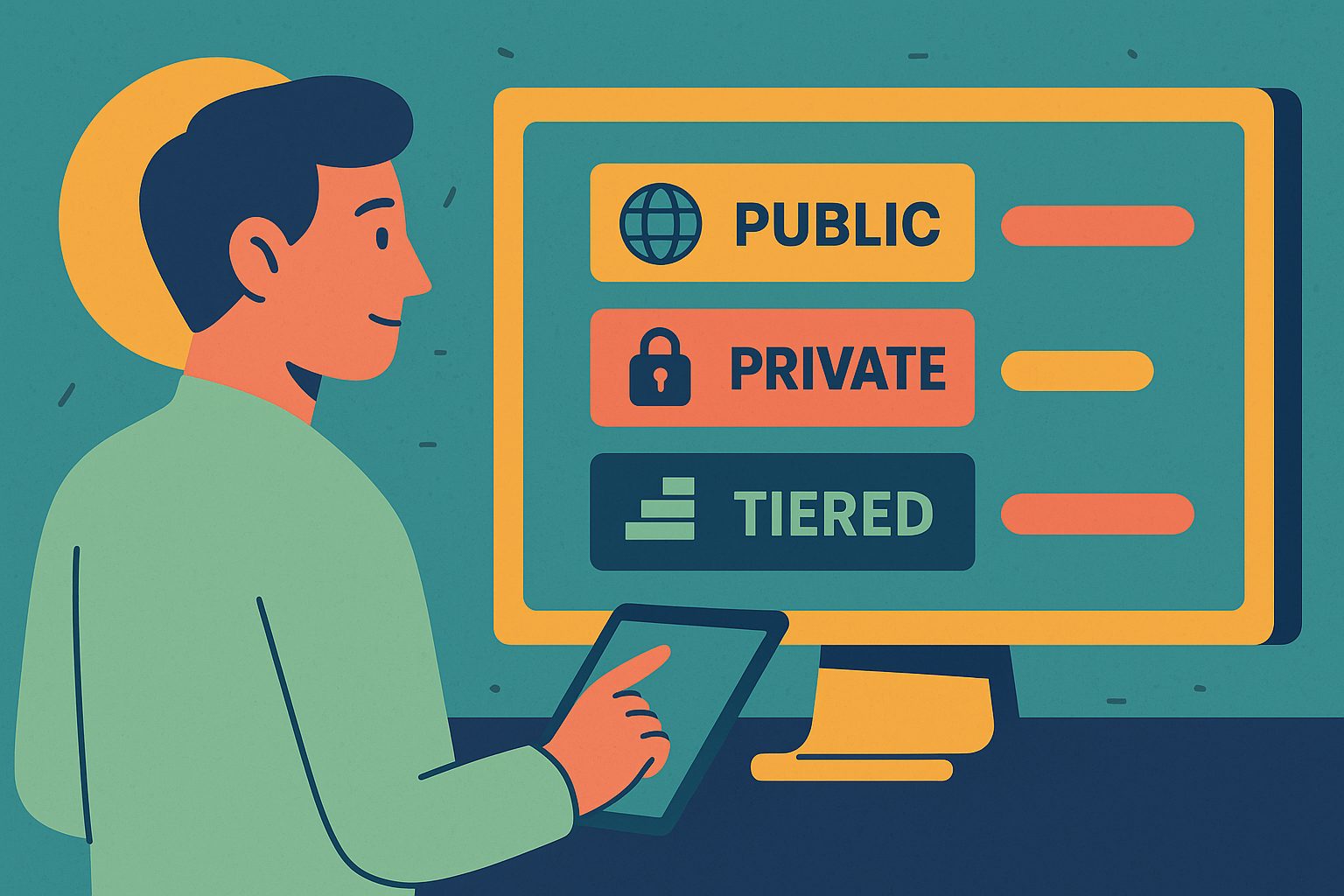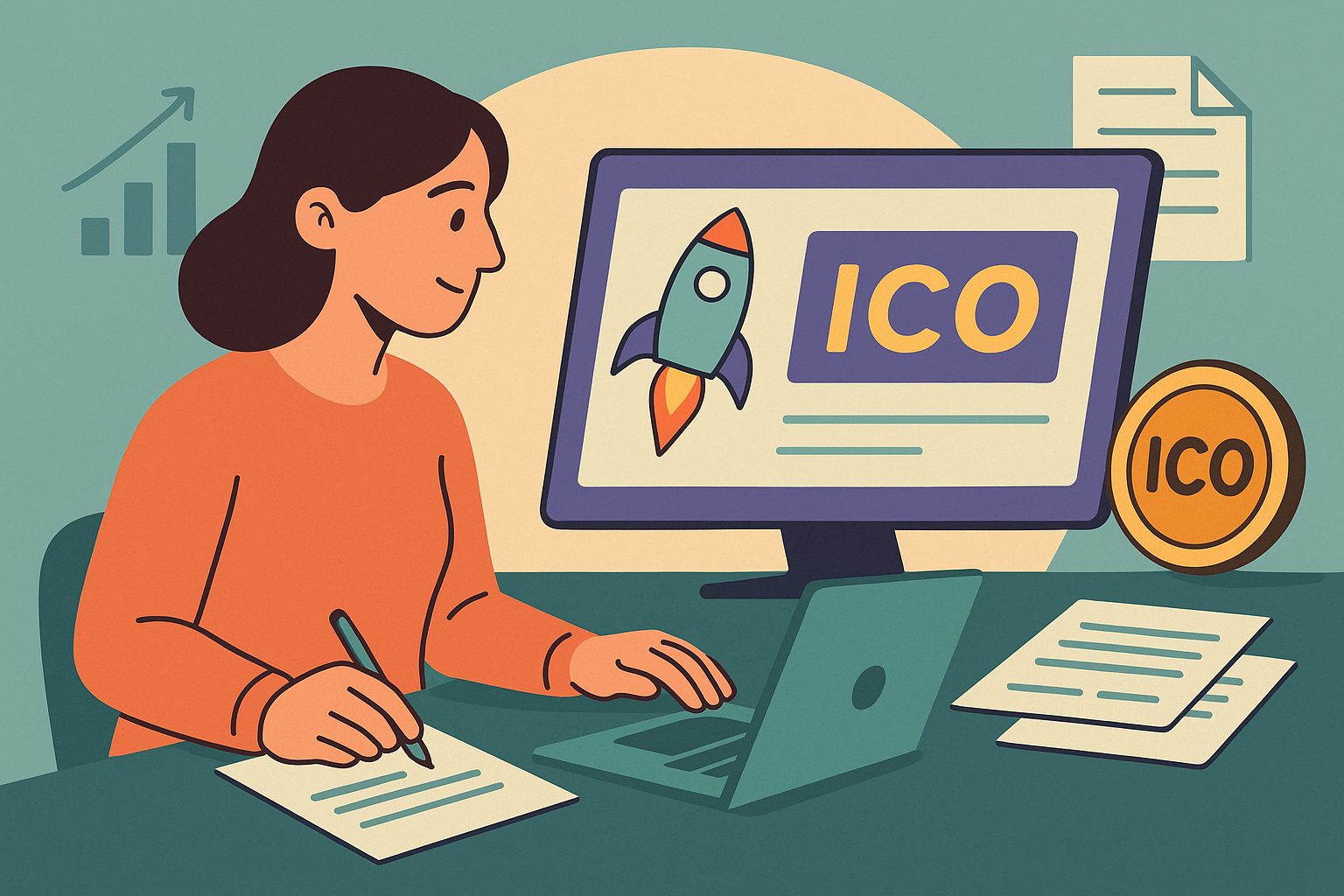Unveiling the Token Sale Landscape
The world of blockchain fundraising offers a spectrum of token sale models—each with its unique mechanics, advantages, and risks. As projects vie for capital and community attention, choosing between an Initial Coin Offering (ICO), an Initial Exchange Offering (IEO), or an Initial DEX Offering (IDO) can significantly influence your launch’s success. Understanding the nuances of each model empowers founders to align fundraising strategies with project goals, regulatory requirements, and market dynamics. In this comprehensive exploration, we dissect the evolution, mechanics, and best-fit scenarios for ICOs, IEOs, and IDOs, equipping you with insights to select the optimal pathway for your venture.
Tracing the Evolution of Token Sales
Blockchain fundraising has come a long way since the first landmark ICO in 2013. Early ICOs offered a novel, permissionless method for startups to issue tokens directly to the public. Enthusiastic investors flocked to these crowdsales, fueling a boom—and eventual bust—marked by spectacular successes and high-profile scams. As regulators cracked down on unvetted offerings, the industry pivoted toward more structured models. Enter the IEO in 2019: centralized exchanges began hosting token sales on behalf of vetted projects, promising enhanced security and broader investor access. Soon after, the rise of decentralized exchanges paved the way for IDOs—permissionless offerings that combine on-chain liquidity with community-driven launch mechanisms. Each iteration builds on lessons learned, refining trust, accessibility, and compliance to meet the needs of a maturing ecosystem.
Decoding the ICO: Democratized Yet Unfiltered
At its core, an ICO empowers projects to sell tokens directly to participants via smart contracts or custom sale portals. Founders define token supply, pricing tiers, and distribution mechanics in a whitepaper, then publicly announce the sale date. Investors send cryptocurrency—often ETH or BTC—to a designated address and receive newly minted tokens in return. The simplicity of this model enabled explosive growth and global participation, bypassing intermediaries and KYC hurdles. However, the lack of centralized oversight also exposed buyers to scams, exit scams, and rampant speculation. Without enforced vetting, projects with weak teams or flawed code could attract substantial funding before disappearing. While ICOs retain appeal for projects seeking full autonomy and direct community engagement, they demand rigorous self-imposed transparency and security measures to inspire trust.
Inside the IEO: Exchange-Backed Assurance
IEOs emerged as a response to ICO pitfalls, shifting the token sale process onto centralized exchange platforms. In this model, exchanges vet project teams, conduct due diligence, and host the sale directly on their user interfaces. Participants purchase tokens using their exchange accounts, benefitting from built-in KYC/AML compliance and seamless custody solutions. Exchanges often lock liquidity by immediately listing tokens on their order books, fostering instant trading and price discovery. The association with a reputable trading platform lends credibility and access to a broad user base. On the flip side, projects must navigate listing fees, revenue-sharing agreements, and platform-specific requirements, which can be costly and restrictive. Moreover, reliance on a centralized actor reinstates counterparty risk and may limit community ownership of the launch process. For projects prioritizing compliance and reach over decentralized ethos, IEOs offer a middle ground.
Exploring IDOs: The Decentralized Frontier
IDOs harness the power of decentralized exchanges (DEXs) and automated market makers (AMMs) to facilitate token sales. Instead of centralized order books, IDOs use liquidity pools seeded by project teams, enabling instantaneous token swaps upon launch. Launchpads built on platforms like Uniswap, PancakeSwap, or Balancer streamline the process, automating whitelists, vesting, and allocation tiers. Because IDOs operate entirely on-chain, they uphold permissionless ideals—anyone with a compatible wallet can participate. This openness fosters inclusivity and global reach, often with minimal KYC friction. Liquidity bonds ensure that trading pairs exist immediately, mitigating listing delays. However, the on-chain environment also exposes participants to front-running bots, MEV (miner extractable value) issues, and potential smart contract vulnerabilities. Projects must balance decentralization with protective measures, such as randomized lotteries or stake-based access tiers, to ensure fair distribution and safeguard investor confidence.
Assessing Strengths and Weaknesses
Each token sale model brings distinct trade-offs. ICOs excel in autonomy and direct community engagement but carry heightened reputational and security risks. Projects control every aspect—from marketing to smart contract deployment—but must shoulder full responsibility for compliance and investor protection. IEOs mitigate many of these risks through exchange partnerships, tapping into established user bases and custody solutions. Yet, they reintroduce centralization and associated fees that can erode fundraising efficiency. IDOs reclaim decentralization, enabling permissionless access and immediate liquidity, but demand robust smart contract audits and anti-bot strategies to maintain fairness. Understanding these dynamics is crucial: an exchange-backed IEO may suit a regulated financial services protocol, while a community-driven gamefi startup might thrive with an IDO’s open ethos.
Aligning Token Sale Models with Project Objectives
Selecting your ideal token sale model hinges on strategic priorities. Early-stage DeFi or infrastructure projects with tight regulatory windows may favor an IEO to leverage exchange compliance frameworks and immediate market access. Consumer-focused applications or open-source protocols with global, geographically diverse supporters often find IDOs more congruent with their decentralized values, unlocking broader participation. Meanwhile, bootstrapped initiatives aiming to retain full control—and willing to invest in rigorous transparency—may embrace the raw autonomy of ICOs. Beyond compliance and community, consider fundraising targets, tokenomics flexibility, and timeline constraints. If you require rapid fundraising within a compressed window, an IEO’s turnkey platform could accelerate logistics. Conversely, if your community demands maximum decentralization, an IDO’s smart contract–driven process may engender deeper loyalty.
Navigating Regulatory and Legal Considerations
Regulatory landscapes continue to evolve, with authorities scrutinizing token classifications and investor protections. ICOs have faced intense regulatory pressure in many jurisdictions, with tokens deemed securities subject to stringent disclosure requirements. Conducting an ICO without proper legal counsel can expose founders to enforcement actions and financial penalties. IEOs offer a more structured environment: exchanges often assume partial liability for compliance, performing KYC/AML checks on participants. However, projects still bear responsibility for legal disclosures and token classifications. IDOs, while decentralized, are not immune; some jurisdictions extend securities regulations to on-chain offerings irrespective of venue. Engaging experienced legal advisors early and mapping regional requirements can prevent costly missteps. Transparent communication of token rights, vesting terms, and use-of-proceeds ensures that investors make informed decisions and regulators recognize your commitment to best practices.
Cultivating Community and Marketing Synergy
Whether you choose an ICO, IEO, or IDO, success depends on forging genuine relationships with your audience. ICOs demand self-driven marketing campaigns: community town halls, social media outreach, and developer workshops showcase your vision directly. IEOs allow projects to tap exchange marketing channels, but you still must nurture forums, publish technical deep dives, and maintain responsive support on Telegram or Discord. For IDOs, community engagement often centers on decentralized governance forums and incentivized yield farming programs that reward active participation. Across models, storytelling matters: share progress transparently, celebrate technical milestones, and invite contributors to shape project roadmaps. Strategic partnerships—with ecosystem protocols, media outlets, or blockchain influencers—amplify reach and lend credibility. By intertwining marketing efforts with community-building initiatives, you transform backers into advocates, driving sustained momentum long after token distribution.
Architecting the Technical Infrastructure
Behind every token sale lies a web of smart contracts, launchpad integrations, and liquidity mechanisms. ICOs typically deploy custom sale contracts that mint tokens based on received funds and enforce vesting schedules. IEOs shift much of this complexity onto exchange platforms, requiring your team to integrate APIs, fulfill listing criteria, and supply audit reports. IDOs demand seamless interactions with DEX protocols: token deployment contracts must interface with AMM pools, while launchpad smart contracts handle whitelisting, allocation limits, and vesting logic. Security audits by reputable firms are non-negotiable across all models, but especially critical for IDOs, where on-chain access magnifies risk exposure. Consider building modular, upgradeable contracts to accommodate future governance features or cross-chain bridges. Continuous integration pipelines and automated test suites will detect regressions before they impact live environments. Robust technical infrastructure instills confidence among stakeholders, ensuring a smooth token sale and post-launch operations.
Charting Your Next Move: A Strategic Roadmap
As the blockchain fundraising landscape continues to evolve, staying agile and informed is essential. Begin by clarifying your project’s vision, target audience, and risk tolerance. Conduct comparative analyses of ICO, IEO, and IDO case studies in your sector, noting how top-performing offerings handled tokenomics, community engagement, and regulatory hurdles. Engage advisors with domain expertise—legal, economic, and technical—to refine your strategy. Then, pilot your approach through mini-events or private sale rounds to gauge interest and stress-test your infrastructure. Whether you opt for the autonomy of an ICO, the backing of an IEO, or the decentralization of an IDO, meticulous planning, transparent communication, and relentless focus on security will set your token sale apart. With the insights and best practices outlined here, you’re well-equipped to navigate the nuances of each model and orchestrate a fundraising event that propels your project toward lasting success.
Looking Forward: The Future of Fundraising
Token sale models will continue to adapt as regulations solidify, new chains emerge, and investor expectations evolve. Hybrid approaches—combining aspects of ICOs, IEOs, and IDOs—may gain traction, offering tiered participation schemes or cross-chain liquidity hubs. Innovations in decentralized identity, zero-knowledge proofs, and on-chain governance will further democratize participation while preserving compliance. As blockchain networks scale and interoperability improves, fundraising may shift toward continuous, protocol-level funding mechanisms rather than singular token sales. By staying attuned to these trends and embedding flexibility into your launch strategy, you’ll not only execute a successful token offering today but also position your project at the vanguard of tomorrow’s decentralized economy.




